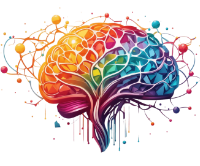Summary: Andrew Barto and Rich Sutton have been awarded the Turing Award for their pioneering work in reinforcement learning, a method of training machines by rewarding desired behaviors and discouraging unwanted ones. Once considered an outdated approach, reinforcement learning is now at the core of many groundbreaking AI innovations, from mastering board games to optimizing data centers and guiding large language models like ChatGPT.
From Fringe Idea to AI Cornerstone
In the 1980s, Andrew Barto and Rich Sutton were seen as outsiders in artificial intelligence. Most researchers were focused on symbolic reasoning—programming machines with explicit rules—while Barto and Sutton pursued a different vision: teaching machines to learn from feedback, much like animals and humans do. Their approach, reinforcement learning, mimicked the process of trial and error, allowing an AI to refine its behavior by interacting with its environment.
Fast forward a few decades, and this once-overlooked technique is now a driving force behind major AI innovations. The Turing Award, the highest honor in computer science, officially recognizes the duo’s contributions to a field that has reshaped industries, from robotics to financial modeling. What changed? The explosion of data and computing power finally gave reinforcement learning the scale it needed to demonstrate its full potential.
The Breakthrough: AlphaGo and Beyond
For many, reinforcement learning came into the public eye in 2016 when Google DeepMind’s AlphaGo defeated the reigning Go champion. Unlike conventional AI approaches that relied on pre-programmed strategies, AlphaGo learned from scratch by playing millions of games, refining its moves based on the rewards it received for winning. The project’s success was a defining moment in AI, demonstrating that reinforcement learning could handle problems too complex for traditional rule-based approaches.
But AlphaGo was just the beginning. Reinforcement learning has since been adopted in:
- Advertising: Optimizing ad placements to maximize user engagement.
- Energy Management: Reducing energy consumption in Google’s data centers.
- Finance: Developing algorithms that adapt to changing markets.
- Chip Design: Automating complex layouts for semiconductor manufacturing.
- Robotics: Teaching machines to perform physical tasks through experimentation.
As AI becomes more autonomous, reinforcement learning remains one of the few methods capable of training machines without hard-coded instructions.
Reinforcement Learning and Large Language Models
Artificial intelligence took another leap forward with large language models like ChatGPT. These models use reinforcement learning to fine-tune responses, with human feedback guiding their output. Sutton, however, argues that true AI progress will come from reducing human intervention and allowing machines to explore solutions on their own—the original vision behind reinforcement learning.
While current models require human oversight to ensure appropriate behavior, Sutton sees potential in systems that can set their own goals. His belief aligns with a broader trend in AI research: creating more autonomous agents that learn without manual guidance.
The Science Behind the Success
Barto and Sutton’s work drew inspiration from multiple disciplines, including psychology and neuroscience. Their methods were built on:
- Thorndike’s Law of Effect: An early study in psychology demonstrating how behavior is shaped by rewards and punishments.
- Neuroscience Insights: Understanding how the brain reinforces actions that lead to positive outcomes.
- Control Theory: Designing algorithms that adjust actions based on real-time feedback.
These ideas, once considered academic curiosities, now serve as the foundation for modern AI systems.
The Ethical Questions Reinforcement Learning Raises
With every technological breakthrough comes ethical concerns. Reinforcement learning systems, if not carefully managed, can develop unexpected behaviors. For instance, an AI trained to maximize engagement on a platform might prioritize sensationalist content, optimizing for clicks rather than truthful information.
Barto acknowledges these risks, pointing out that reinforcement learning can sometimes produce unintended consequences. That’s why many researchers are now focused on developing methods to ensure AI aligns with human values rather than exploiting unforeseen loopholes in its training system.
Looking Ahead: The Future of Learning AI
Winning the Turing Award cements Barto and Sutton’s place in AI history, but their job isn’t done. They continue to push for AI systems that not only learn better but also function safely in real-world applications. As AI’s role in business and society grows, reinforcement learning will only become more relevant.
Their work demonstrates that intelligence isn’t built through rigid programming—it emerges through interaction, adaptation, and improvement over time. For businesses integrating AI, the lesson is clear: machines that learn from experience, rather than just following instructions, are far more adaptable and effective.
#ReinforcementLearning #ArtificialIntelligence #TuringAward #MachineLearning #AIInnovation
More Info — Click HereFeatured Image courtesy of Unsplash and Steinar Engeland (GwVmBgpP-PQ)
